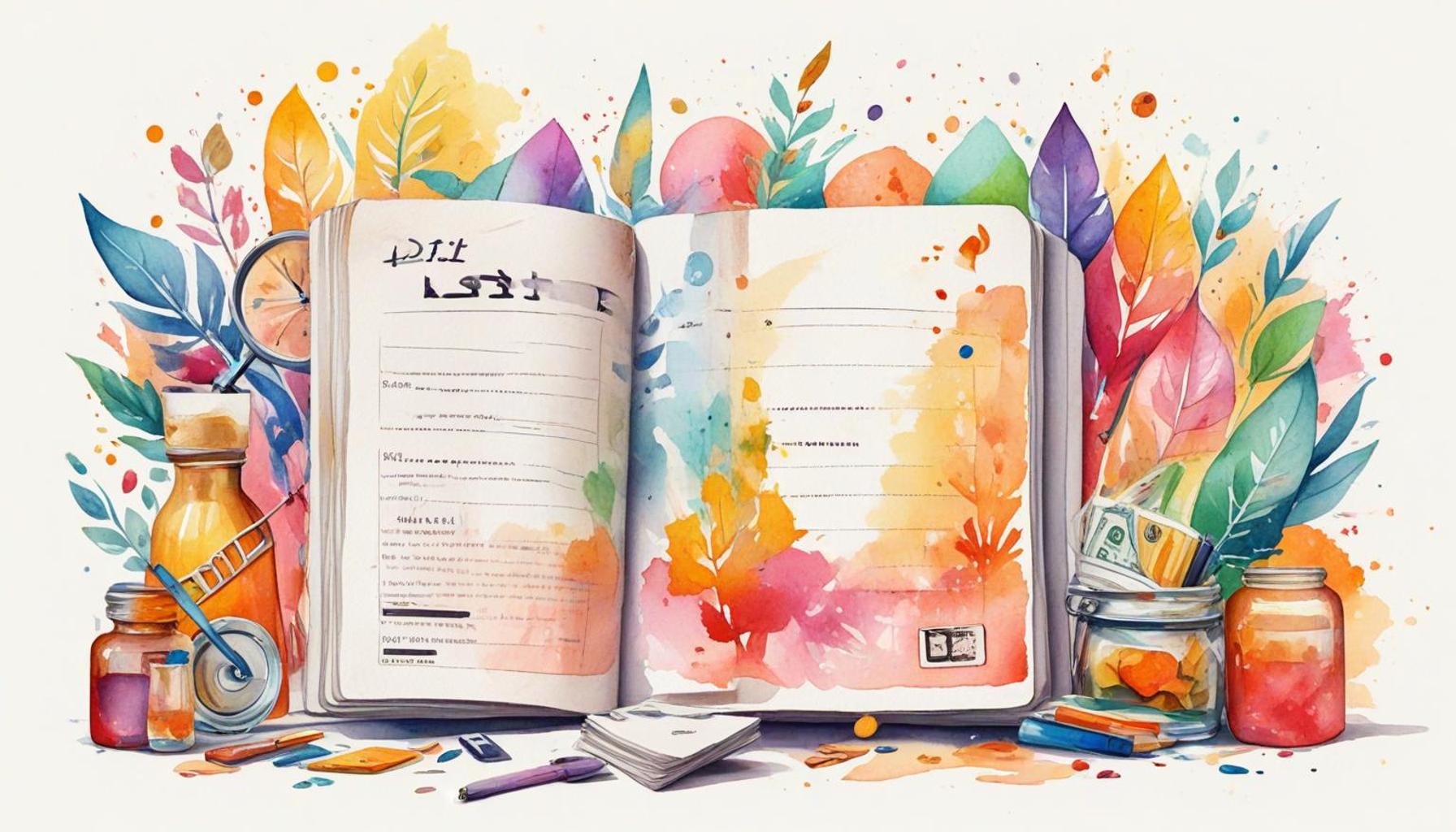How to Get Out of Debt in Less Than a Year with Organization

Understanding Debt and Organization
Carrying debt can truly feel overwhelming, as it impacts not only your financial status but also your mental well-being. The good news is that you are not alone in this challenge, and with effective organization and a thoughtful plan, it is entirely possible to conquer your financial obligations. Remarkably, many individuals have found themselves debt-free within a year by following structured approaches.
Key Steps to Financial Freedom
- Assess Your Situation: Begin this journey by taking a comprehensive inventory of your financial situation. Collect all your financial statements, including credit card bills, loans, and any other outstanding debts. Calculate the total amount owed, and categorize your debts by type and interest rates. For example, you might find personal loans at 10% interest, credit card debts at 20%, and a car loan at 6%. Understanding these figures gives you clarity and helps prioritize your repayment strategy.
- Create a Budget: Developing a budget is crucial in managing your finances. Track your monthly income from all sources, including your salary and any side gigs. Next, list your fixed expenses like rent or mortgage, utilities, food, and transportation. Once you identify your essential expenses, analyze where you can cut back. For instance, consider reducing discretionary spending on dining out or subscription services. This exercise can reveal potential savings that could be redirected towards paying off debts.
- Prioritize Debts: Not all debts are created equal, especially in terms of interest rates. Focus on paying off high-interest debts first, which is often referred to as the avalanche method. Alternatively, you may prefer the snowball method, where you tackle smaller debts first to build momentum. For example, if you have a credit card debt of $2,000 at 20% interest and a personal loan of $5,000 at 10% interest, prioritizing the credit card debt could save you more money in the long run.
By diligently following these initial steps, you lay the groundwork for achieving financial stability. Staying organized not only allows you to monitor your progress but also alleviates the stress and anxiety associated with managing debt.
Stay Committed and Adaptive
Maintaining a commitment to your financial plan is vital. While the journey may come with its own set of challenges—including unexpected expenses or changing job circumstances—adapting your approach can keep you aligned with your goals. Regularly reassess your budget and repayment strategies; if something isn’t working well, do not hesitate to change your plan to suit your current situation. Remember, discipline and a practical approach to organization are the keys to successfully escaping debt.
This article aims to empower you with detailed strategies for achieving a debt-free life in less than a year. Armed with the right information and an organized plan, you can reclaim control over your financial future and enjoy the peace of mind that comes with being debt-free.
SEE ALSO: Click here to read another article
Taking Control of Your Finances
Once you’ve assessed your situation and created a budget, the next step in your journey to becoming debt-free is to truly take control of your finances. This encompasses not only managing your debts but also understanding financial habits that may have contributed to your current situation. By recognizing these patterns, you can initiate meaningful changes that align with your goal of becoming debt-free within a year.
Establish a Debt Repayment Plan
Creating a clear and actionable debt repayment plan is essential. This plan serves as a roadmap that guides your financial decisions over the coming months. Here are several important steps to consider:
- Set Specific Goals: Define how much you want to pay off each month. For example, if you have $12,000 in debt, a goal might be to pay off $1,000 per month. This gives you a tangible objective to work towards.
- Choose a Payment Schedule: Decide how often you will make payments towards your debt. Weekly or bi-weekly contributions can build momentum and reduce the balance more quickly.
- Automate Payments: Consider setting up automatic payments for your debt. This not only ensures that you won’t miss a due date but can also help in maintaining your budget. You can set these up through your bank or directly with your creditors.
- Track Your Progress: Regularly monitor your debt repayment progress as you follow your plan. Create a spreadsheet or use an app to update your payment history. This visual of your trajectory will keep you motivated to continue on your path to financial freedom.
With a solid debt repayment plan in place, you empower yourself to stay focused on your goals. Understanding where your money goes each month and actively managing your payments helps mitigate feelings of stress and uncertainty.
Reduce Additional Expenses
As you commit to paying off your debts, it’s crucial to minimize additional expenses. Traditional expenses can often pile up, making it harder to adhere to your repayment schedule. Here are some practical strategies:
- Identify Non-Essential Expenses: Review your monthly budget to highlight areas where you can cut back. Non-essential expenses like luxury items, frequent dining out, or subscription services can be temporarily reduced or eliminated.
- Utilize Discounts and Coupons: Always search for discounts and use coupons when shopping, whether for groceries or general merchandise. These savings can add up and contribute to your debt payments.
- Consider Thrifty Alternatives: For entertainment or things you enjoy, explore alternatives that are more budget-friendly. Instead of going to concerts or movies, consider hosting a movie night at home or attending free community events.
By taking control of your finances, establishing a debt repayment plan, and reducing additional expenses, you lay a profound foundation for a debt-free existence. Remaining organized and proactive not only streamlines your process towards financial health but also fosters a sense of confidence that you can overcome your debt challenges.
CHECK OUT: Click here to explore more
Finding Additional Income Streams
While managing your expenses is crucial, enhancing your income can significantly expedite your journey to being debt-free. By tapping into additional income streams, you can create a buffer, allowing you to pay off debts more aggressively. Here are a few methods you might consider:
Explore Side Gigs
One of the easiest ways to boost your income is by taking on side jobs. You could become a freelancer in your area of expertise, whether that’s writing, graphic design, or consulting. Websites like Upwork or Fiverr allow you to connect with potential clients. If you enjoy crafting or creating, consider selling your products on platforms like Etsy. These side gigs not only provide extra cash but also allow you to utilize your skills creatively.
Utilize Your Property
If you have extra space in your home, think about Airbnb or renting a room to steady income. For instance, if you live in a popular tourist destination, you can charge premium rates during peak season. Even renting out storage space in your garage or attic can turn unused areas into a source of income.
Part-time Job Opportunities
A traditional part-time job can also provide a steady cash flow. Look for opportunities that offer flexibility, such as retail positions or community service roles. Even temporary positions, especially during holidays, can help you pay down your debt more rapidly. This might be challenging, but if approached with the right mindset, it can also foster discipline in managing your time and finances.
Turn Hobbies into Income
Think critically about hobbies that could bring in extra money. If you have a knack for photography, consider offering portrait sessions or event photography. Those who enjoy cooking could sell homemade meals or baked goods locally. Identifying a skill or hobby that resonates with you and providing it as a service can be enjoyable while relieving some financial pressure.
Stay Motivated with Personal Finance Tools
Staying organized and motivated is essential as you work towards being debt-free. Many tools are available to help monitor your spending, set financial goals, and track your progress. Utilizing apps such as Mint or YNAB (You Need a Budget) can be invaluable. These tools provide a comprehensive view of your finances, enabling you to see where you stand at any point in time.
Leverage Financial Education Resources
Enhancing your financial literacy is another vital component. Take advantage of free resources available online, such as podcasts, blogs, or courses. Websites like Khan Academy or Coursera offer valuable insights into personal finance. By better understanding how money works, you can make more informed decisions about your spending, saving, and investing—thereby minimizing the risk of falling back into debt.
Create Accountability
Share your goals with a trusted friend or family member. Having someone to hold you accountable can help keep you on track. Regularly discussing your progress with them can motivate you to remain vigilant and committed to achieving your financial goals.
By focusing not only on reducing your expenses but also on increasing your income and honing your financial management skills, you strengthen your ability to get out of debt within a year. Maintaining organization in your financial habits, while being proactive about additional income opportunities, propels you on your path to financial freedom.
CHECK OUT: Click here to explore more
Conclusion
In conclusion, getting out of debt within a year is an achievable goal when approached with a structured and organized mindset. By understanding your financial situation and creating a comprehensive budget, you lay a solid foundation for effective debt management. Prioritizing your debts through the snowball or avalanche method helps structure your repayment strategy, allowing you to focus on tackling one commitment at a time, which can alleviate overwhelming feelings.
Moreover, don’t overlook the impact that finding additional income streams can have on your debt reduction journey. Whether it’s engaging in side gigs, utilizing your property, or turning hobbies into earnings, diversifying your income not only accelerates debt repayment but also introduces new financial opportunities. Remember, motivation is paramount—utilizing personal finance tools and educating yourself on money management will enhance your understanding and decision-making capabilities.
Additionally, consider fostering accountability by sharing your financial goals with trusted friends or family members. Their support can keep you focused and motivated. Ultimately, the journey to financial freedom involves consistent effort and resilience. As you implement these strategies and maintain an organized approach, you will find yourself closer to achieving a debt-free life, leading to greater peace of mind and financial stability in the long run. Stay committed to the process; every small step contributes to your overall success. Your journey toward financial independence begins today!
Related posts:
The Role of Continuing Education in Career Advancement in Finance
How to balance a family budget during times of inflation
Strategies for Managing Personal Finances and Accelerating Professional Growth
Emerging Trends in Finance and Their Impact on Career Development
How to Save Money When Shopping for Groceries
Common mistakes when using a credit card and how to avoid them

Linda Carter is a writer and financial expert specializing in personal finance and financial planning. With extensive experience helping individuals achieve financial stability and make informed decisions, Linda shares her knowledge on our platform. Her goal is to empower readers with practical advice and strategies for financial success.